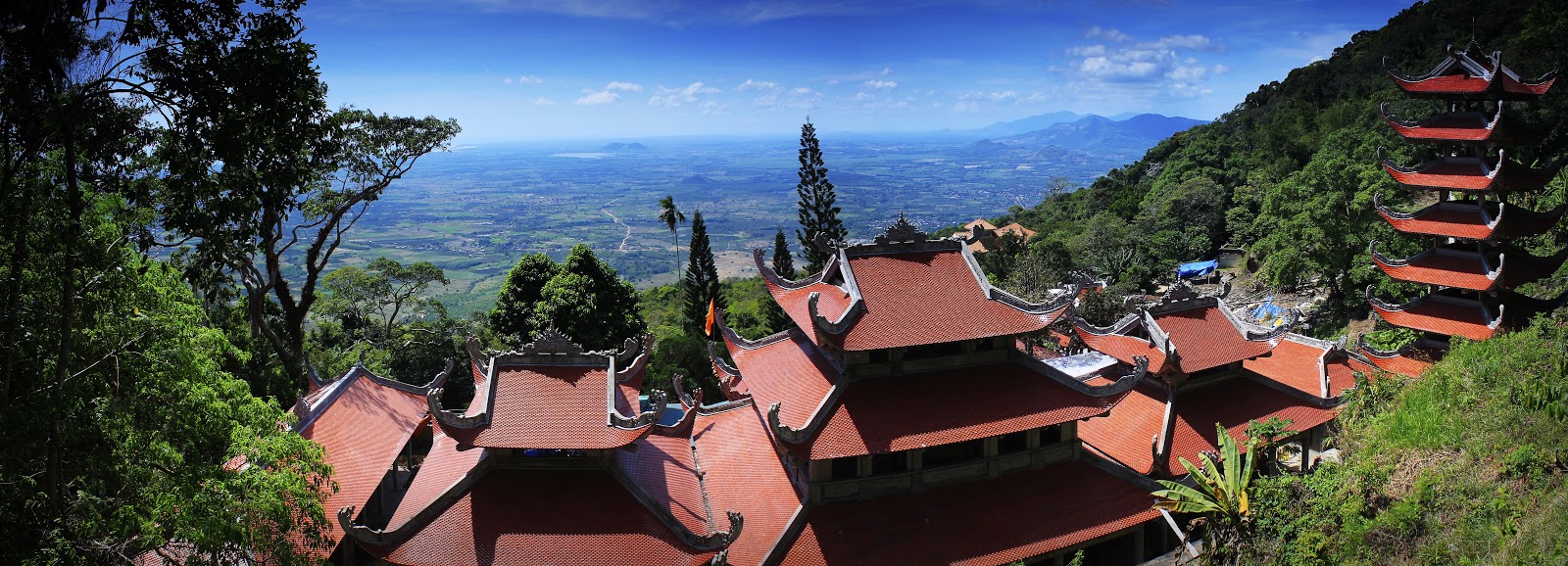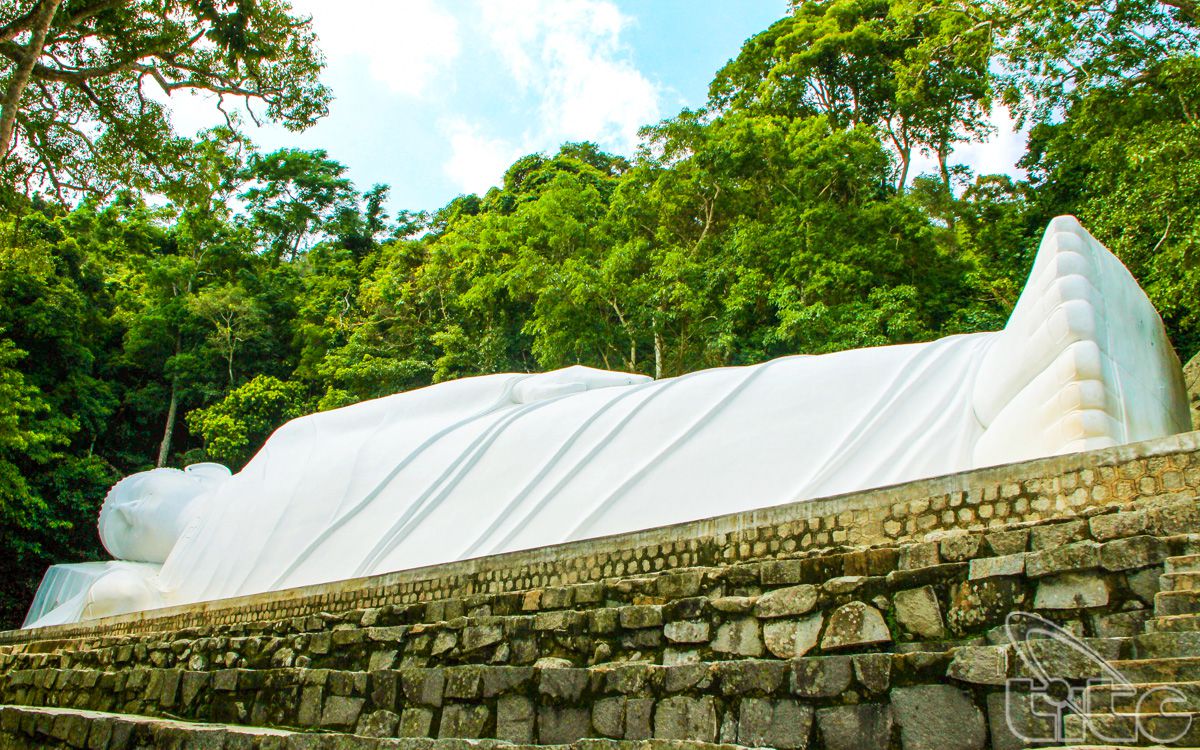Hotline: 091 807 8619
Thursday, 16/01/2020, 17:05 GMT+7
Going to the peak of Ta Cu and thinking over Nirvana
From Kega Lighthouse Resort, go the West for about thirty kilometers to Ta Cu Mountain. The mountain is quite near National Route 1A, not far from Thuan Nam town, far from Phan Thiet City 28km to the South.
Like a giant bowl facing down in the middle of immense plains of dragon fruit trees, the mountain peak is 649m above sea level. The terrain with full of obstacles and difficult of access makes this scene wild and wonderful, primeval forest is quite intact as a rare thing left after the chaos of livelihood. At the mountain peak, there is a glimpse of an ancient pagoda hidden behind the forest.

The mystery of the mountain is associated with the 49-meter-long statue of Buddha Nirvana located on a mountain built from the old regime. Many people have climbed up here, however not many people understand the Buddha statue has existed through two regimes and the concept of "Nirvana" has roots from India. The mountain is half a kilometer long but the road up there takes more than 2 km through the jungle and cliffs. It is a small matter for farmers who come up there, however for officers, sitting in air-conditioned room all year, it is no small challenge

According to the monks, "Nirvana" is the Buddhist concept of an ideal state, where the soul is liberated from samsara, death comes and is followed by rebirth. Nirvana is generally understood to exist after death. Buddha Shakyamuni was enlightened and attained Nirvana under the Bodhi tree. In ancient Indian, Nirvana means to extinguish or not be bound, free from what has bound us, from the burning passion of lust, jealousy, and ignorance...
At the age of 80, after 49 years of beginning the world, Buddha entered Nirvana under two Sa la canopy trees. The site was later identified by archaeologists as Kasia in the Deoria district of Utta Pradesh. This place is 55km southeast of Gorakhpur. Gorakhpur has nearly a million inhabitants located in the northern of India and quite near the border with Nepal.
The Buddha came from the royal class, however, he did not choose to become an emperor but turned himself into a wandering ascetic hermit, homeless and devoting much of his time to meditation. He hoped to find enlightenment by separating himself from the world, reaching out to the opposite of previous life. Choosing the path of asceticism, to the point that Shakyamuni is nearly starving however still has not attained enlightenment. If he continued on that path, he would die without any knowledge, so Shakyamuni gave up an ascetic life and accepted a meal from a stranger. He decided to go the middle way, life between luxury and poverty, life between contentment and maceration.
After Siddhartha followed this path, he finally achieved enlightenment and became a Buddha. When meditating under a Bodhi tree, he saw all his previous lives, and then the previous lives of others. He eventually gained a perfect knowledge of the world and beyond it. He spent the rest of his time going to various places to spread his ideas to the students. Thanks to that, Buddhism from India has been spread to many countries around the world.
After 49 years of spreading, the Buddha entered Nirvana, which became an important mecca for Buddhists to worship. Buddhists of our country not everyone has the opportunity to pilgrimage to India to worship where Buddha entered Nirvana. With respect and admiration for the life of the Buddha, a number of monks have built Buddha statues with the state of Nirvana, which is still called the reclining Buddha.
Epitaph records: Ta Cu Pagoda has a history of nearly 150 years with many ancient architectural works amidst the natural scenery of wild and mysterious mountains. The pagoda was founded by the progenitor Thich Huu Duc in 1870. At that time, this mountain was also a remote place and full of wild animals. In the reign of the first Dong Khanh king, the monk Huu Duc passed away at the age of 76, after entrusting the Buddha’s work to his disciples.
In 1960, during the reign of Mr. Ngo Dinh Diem, the abbot of Thich Vinh Tho sketched a giant open-air statue of Thich Ca entering Nirvana behind the pagoda. In 1962, this work was started by sculptor Truong Dinh Y chaired. Four years later, in 1966, a giant Buddha statue of 49m long and 11m high was completed. The statue is created on a reclining position, with its back leaning against the cliff, calmly resting its head on its hands, both solemn and elegant, close and gentle with the mountain space. On January 2nd, 2006, the Buddha statue entering Nirvana was recognized as an Asian record by the Vietnam Record Organization.
Not everyone has had the opportunity to visit this place, including the indigenous people. If you would like to explore this scenic spot, you should go to Kega Lighthouse Resort.
Photo: Internet












